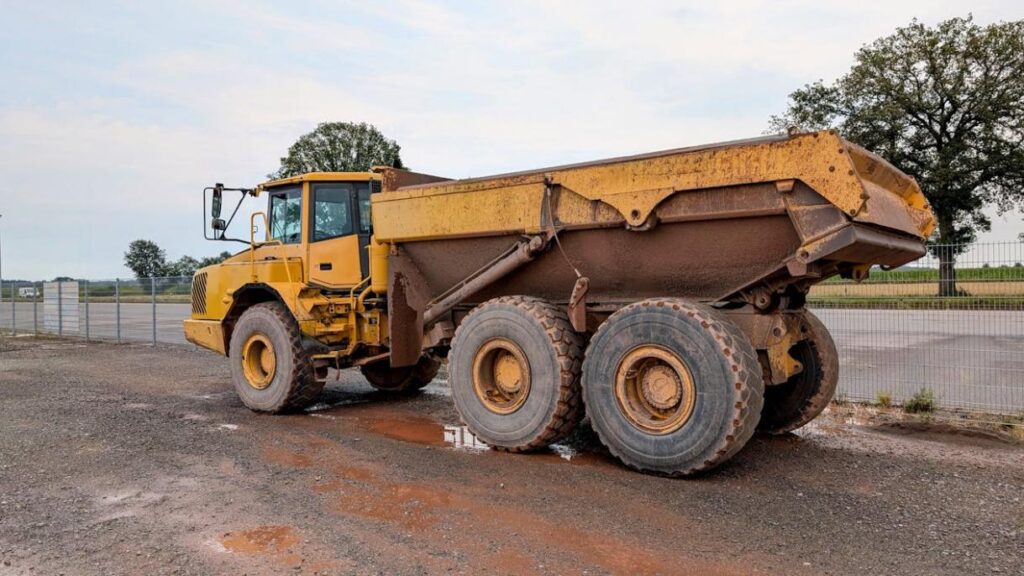Driving a dump truck isn’t just about getting from point A to point B; it’s about maintaining stability and avoiding accidents. The Wink Anti-Tip device is your trusty sidekick, designed to keep your dump truck steady and safe. This cutting-edge solution is perfect for frameless, roll-off, and frame-type dump trucks, giving you peace of mind on the road.
Knowing how the Wink Anti-Tip device works and following best practices ensures you get the most out of this technology. From pre-trip inspections to driving tips and post-trip maintenance, every step is crucial to keeping your system effective and safe. Our goal? Minimize risks and maximize safety in your dump truck operations.
In this article, I’ll walk you through the Wink Anti-Tip device’s functionality, outline essential pre-trip checks, share top driving practices, and explain crucial post-trip maintenance steps. By the end, you’ll know exactly how to make the most of this technology, ensuring safer journeys for everyone on the road.
Understanding the Functionality of Wink Anti-Tip Devices
The Wink Anti-Tip device is your dump truck’s guardian angel, preventing tip-overs with advanced sensor technology. These sensors keep an eye on the truck’s tilt and balance in real-time. If the truck starts leaning too much, the device instantly alerts the driver, giving them a heads-up to take corrective action.
But it doesn’t stop there. The Wink Anti-Tip system can also automatically adjust by lowering the unit when tipping risks are detected. This clever feature redistributes the truck’s load evenly, reducing the chance of a tip-over even on rough terrain. Understanding these functionalities helps drivers see just how crucial this device is for safe dump truck operations.
Pre-Trip Inspection: Ensuring Your Wink Anti-Tip is Ready
Before you hit the road, a pre-trip inspection of your Wink Anti-Tip device is a must. Start by checking the main unit for any signs of damage or wear. Ensure all bolts and mounting brackets are tightly secured—any looseness can impair the device’s function.
Next, inspect the sensors to make sure they’re clean and debris-free. Obstructed or dirty sensors can’t accurately detect tipping risks, compromising the system’s effectiveness. Verify all electrical connections are secure with no exposed or frayed wires. Proper connections are crucial for seamless operation.
Power up the Wink Anti-Tip device and perform a quick functional test. Slightly tilt the truck and see if the device issues an alert. If it doesn’t respond as expected, recalibrate or service it before using the truck. These pre-trip steps ensure your Wink Anti-Tip device performs flawlessly, providing the safety features you need throughout your drive.
Best Practices While Driving with Wink Anti-Tip
Driving a dump truck with the Wink Anti-Tip device? Follow these best practices for maximum safety:
- Mind Your Load: Even though the Anti-Tip device corrects imbalances, it’s crucial to load your truck evenly. This minimizes weight shifts during transit. Always check your load before starting your journey to avoid unnecessary tipping risks.
- Keep It Slow: Maintaining a safe driving speed is essential. Slower speeds give you more time to react to the device’s real-time alerts for potential tipping. Avoid sharp turns or sudden movements, especially with heavy or uneven loads. Gradual acceleration and deceleration help keep the truck stable, giving the Anti-Tip device time to do its job effectively.
Post-Trip Maintenance and Safety Checks for Wink Anti-Tip
After your trip, post-trip maintenance and safety checks on your Wink Anti-Tip device are a must. Start with a visual inspection of the unit and its sensors. Look for signs of wear or damage that may have occurred during the trip. Ensure the mounting brackets and fasteners are still secure and haven’t loosened.
Next, clean the sensors and other components to remove any accumulated dirt or debris. This is crucial, especially if the truck has been operating in muddy or dusty conditions, as blocked sensors can impair functionality. Check the device’s electrical connections to ensure they’re intact and not showing signs of wear or corrosion.
Record any anomalies or maintenance actions in a logbook for future reference. This helps track the device’s performance and identify patterns indicating underlying issues. Regular post-trip maintenance not only extends the lifespan of your Wink Anti-Tip device but also ensures it remains reliable and efficient for future operations.
Final Thoughts
Understanding the Wink Anti-Tip device and following best practices ensures safer, more efficient dump truck operations. Whether it’s during pre-trip inspections, while driving, or post-trip maintenance, each step maximizes the benefits of this innovative safety solution.
The Wink Anti-Tip device is your safeguard, constantly working to keep your truck stable and secure. By integrating this technology into your routine, you help prevent potential accidents, reduce risks, and maintain high operational efficiency.
Want to boost your dump truck fleet’s safety and reliability? Contact us to learn how the Wink Anti-Tip device can make a significant difference. Equip your trucks with top-tier stability technology today!




0 Comments